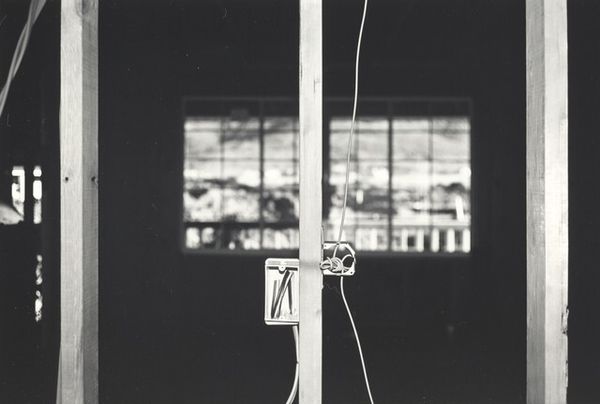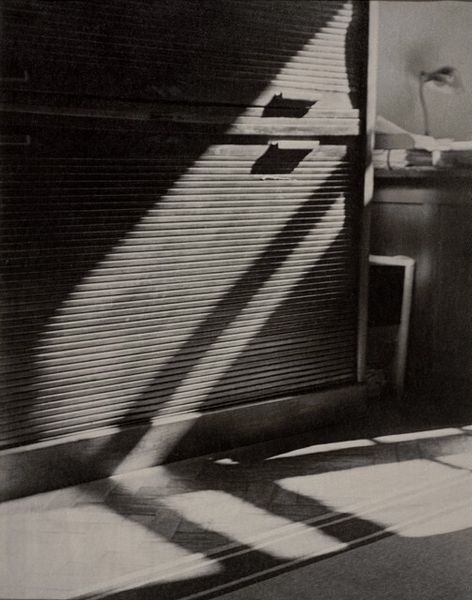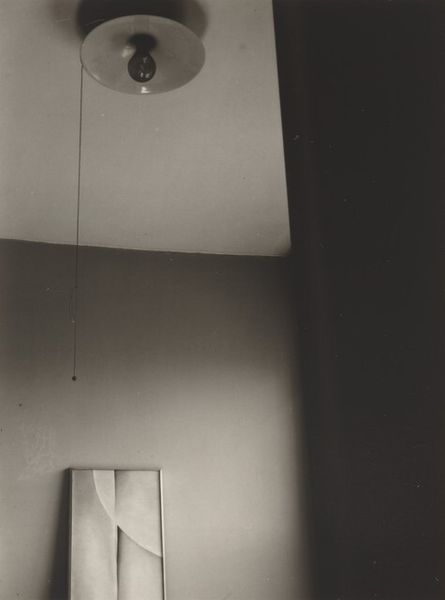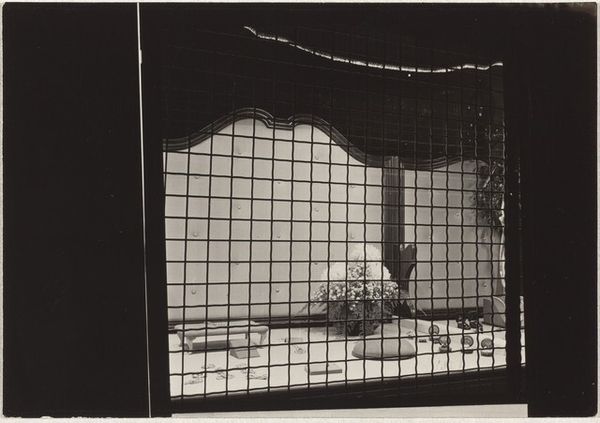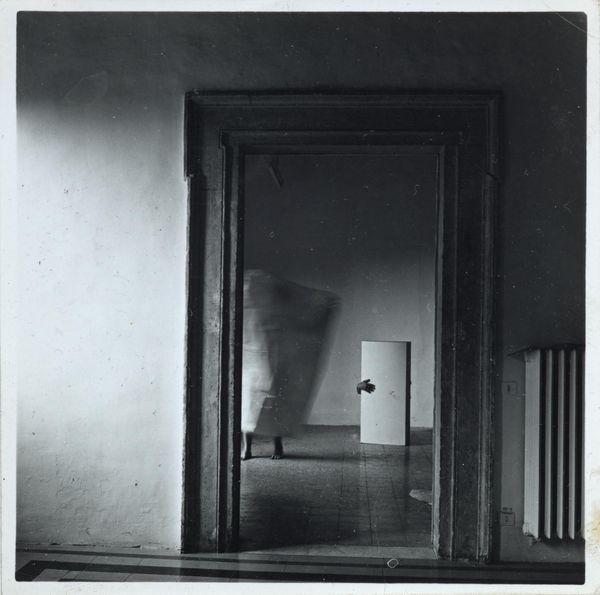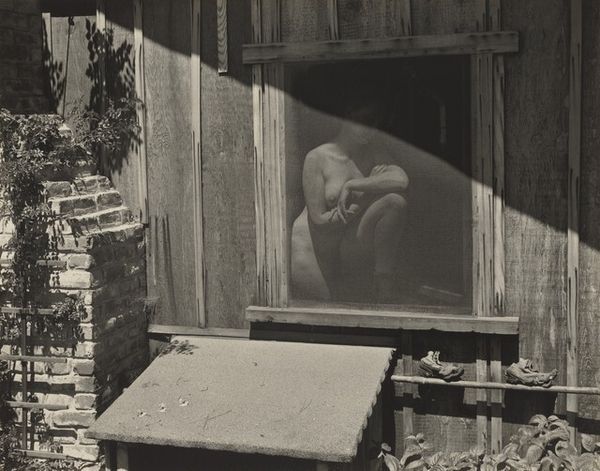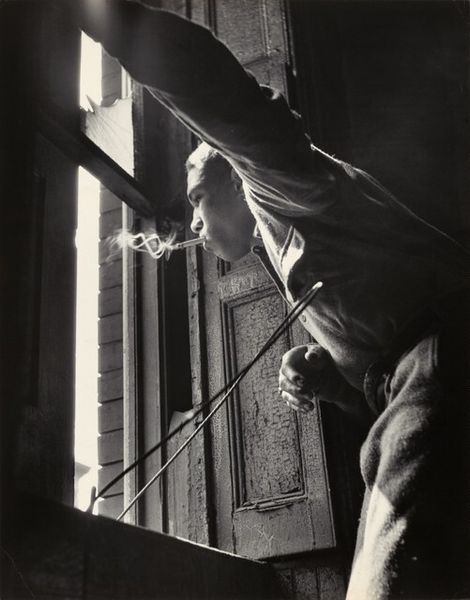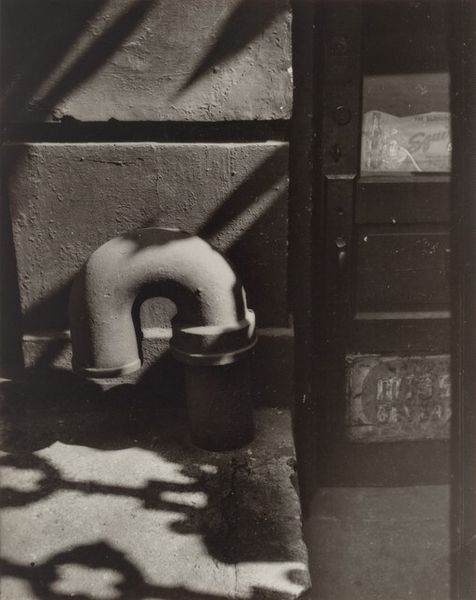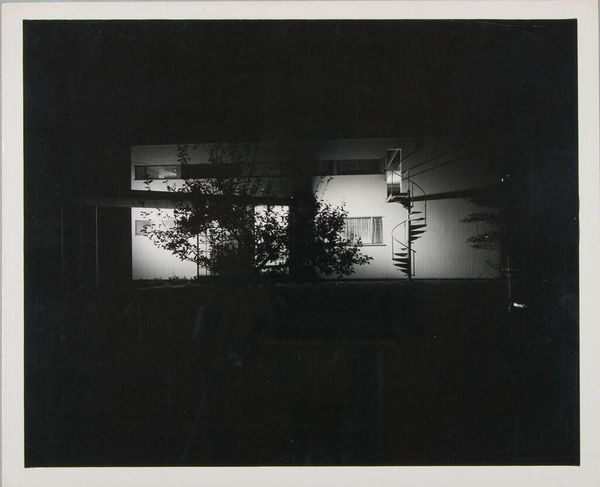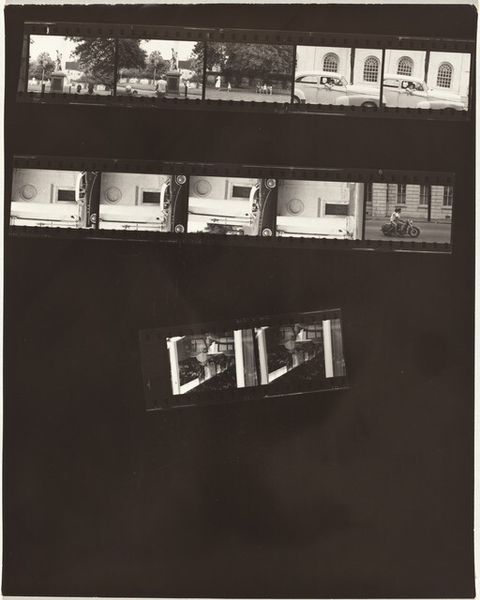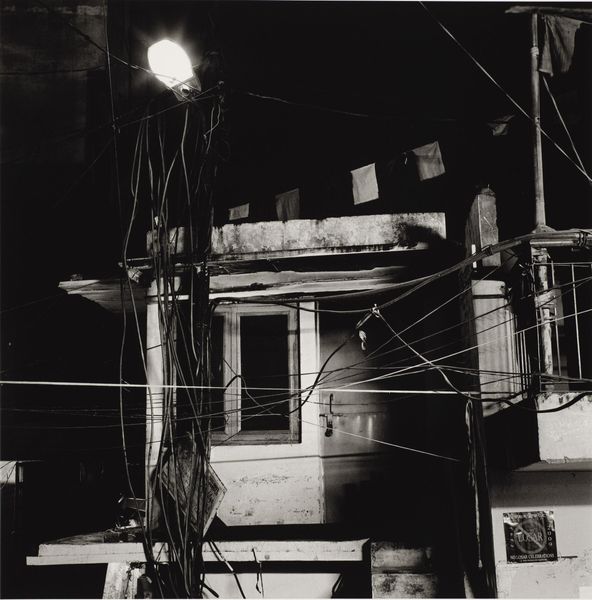
Dimensions: image: 23.3 x 34.3 cm (9 3/16 x 13 1/2 in.) sheet: 27.8 x 35.3 cm (10 15/16 x 13 7/8 in.)
Copyright: CC0 1.0
Editor: So this black and white photograph, titled "Barber" by Daido Moriyama, captures a barber's pole in stark detail. It’s a bit gritty, and I'm curious about the story it's trying to tell through such everyday subject matter. What do you see in this piece? Curator: It's less about story and more about the means of production. Consider the photograph's materiality: the graininess, the high contrast. These aren’t accidental. Moriyama deliberately uses these techniques, challenging the idea of a pristine, objective image. How does this aesthetic choice relate to the social context of post-war Japan? Editor: Well, the rough aesthetic could reflect the raw, unfiltered reality of the time... Curator: Exactly. And think about the barber’s pole itself, a mass-produced object, now elevated to art. Moriyama's work asks us to consider the labor and the system of consumption behind even the most mundane objects. It disrupts traditional hierarchies, doesn't it? Editor: It really does. I didn't think about the production aspect initially, but it adds so much depth to the work. Curator: Precisely. Seeing art through the lens of materials and social context gives it new meaning.
Comments
No comments
Be the first to comment and join the conversation on the ultimate creative platform.
